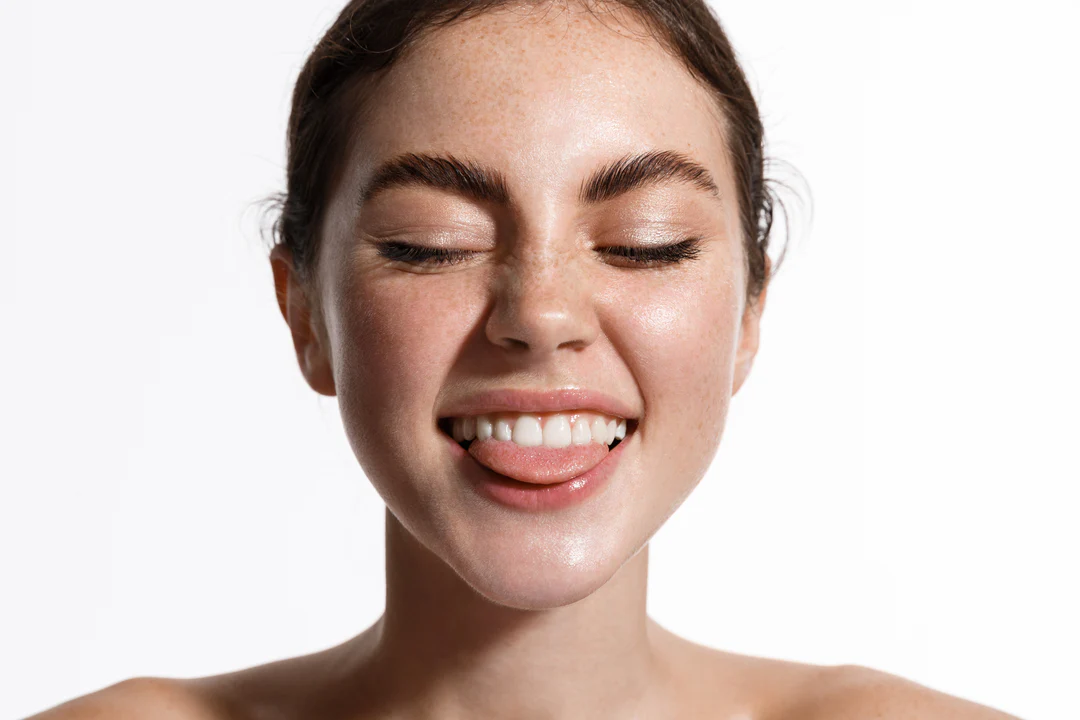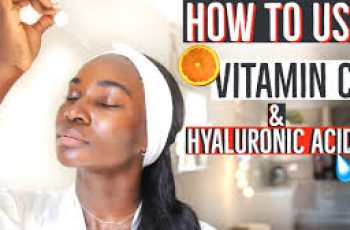When you think of the best acne-fighting products, the first things that come to mind might be all-stars like salicylic acid, benzoyl peroxide, and retinol.
While these products certainly live up to their reputations, there’s another lesser-known ingredient that doesn’t get enough credit for its acne-fighting benefits: azelaic acid.
“Azelaic acid is a naturally occurring acid found in grains like wheat, barley, and rye,” says board-certified dermatologist Dr. Stacy Chimento, MD, of Riverchase Dermatology in Gulf Harbor Islands, Florida.
It can also be produced by yeast on the skin. “It’s commonly found in creams, gels, or foams and can reduce inflammation, promote skin cell turnover, and relieve acne.”
Similar to other popular ingredients known for their skin-loving properties, azelaic acid has a variety of uses, but is best known for its ability to fight acne and rosacea.
“As an anti-inflammatory agent, azelaic acid can reduce inflammation, making acne less noticeable, less red, and less irritated,” says Dr. Chimento. Additionally, the ingredient can help clear pores of bacteria that can cause breakouts.
At the same time, it promotes cell turnover and slows the production of melanin, which can lead to hyperpigmentation and melasma.
Of course, there are a few things to keep in mind if you’re considering incorporating it into your daily skincare routine. First, it should be applied about 15 minutes after cleansing and before moisturizing so that it can be fully absorbed into the skin.
“Azelaic acid should be used morning and night, preferably with a moisturizer or serum,” says Dr. Aza Halim. “It should also be well blended into the skin or applied to dark spots and absorbed to avoid edges that make the skin look patchy.”
According to Dr. Chimento, you’ll usually want to take azelaic acid with something else, as it can take a while to see noticeable results when using the ingredient alone—but you should certainly be careful about what you mix it with.
“While azelaic acid can be mixed with almost any product, using it with beta-hydroxy acids (BHAs) like salicylic acid can increase the risk of dryness and irritation,” says Dr. Chimento.
“If you use an over-the-counter, stronger form of azelaic acid, you should consult your dermatologist before mixing or combining it with any ingredients or products.”
Anyone using azelaic acid may also experience side effects, such as irritation, redness, flaking skin, peeling, and/or hives, but not everyone experiences this.
If you have sensitive skin, Dr. Halim recommends slowly introducing this ingredient into your routine (start with a few times a week and then increase to daily use). However, if you notice any of the side effects listed above, you should discontinue use immediately. If you’re ready to make a change, read on to learn about some azelaic acid-rich products worth adding to your diet. 1. Paula’s Choice 10% Azelaic Acid Booster: Azelaic acid isn’t the only active ingredient in this acne-fighting product. It also contains salicylic acid and licorice root to eliminate acne-causing bacteria on the skin while balancing skin texture and softening blemishes. 2. The Ordinary Azelaic Acid Suspension 10%: Imagine adding four extra products to your skincare routine for less than $10 and experiencing the benefits of each. Here’s how to use this versatile, affordable product that reduces blemishes, evens out skin tone, and infuses your skin with antioxidants.
3. FaceTheory Lumizela Azelaic Acid Serum A10: This botanical serum with 10% azelaic acid clears skin bacteria and reduces blemishes. Plus, ingredients like oatmeal and aloe can minimize irritation,
the appearance or swelling caused by rosacea.
4. Sodium Azelaate Topical 10%: This product uses azelaic acid along with other key ingredients like vitamin C and niacinamide to minimize congestion, redness, and discoloration while reducing excess oil production.
5. Typology Oil Control Serum 10% Azelaic Acid: This lightweight serum can be massaged into skin morning and night to reduce excess oil production. According to some reviews, it’s also effective as a spot treatment.
6. PCA SKIN Pigment Gel: This gel-serum contains a combination of azelaic acid, lactic acid, and kojic acid to treat hyperpigmentation and brighten your skin by slowing down melanin production.
7. Dr. Brandt Dark Spot Eliminating Triple Acid Stain Minimizing Concentrate: This targeted treatment aims to fade dark spots and discoloration with tranexamic acid, a dermatologist’s go-to treatment for hyperpigmentation.
8. TULA Skincare Clear It Up Acne + Skin Correction Gel Clear skin doesn’t have to come at the expense of moisture. Enriched with azelaic acid and salicylic acid, this formula reduces the appearance of acne and prevents future breakouts without drying out the skin.
DQH Knowledge drop: In your 20s, your skin cell turnover decreases. (Cell turnover is a key component in keeping your skin youthful.) You know what else slows down? Your collagen production. Starting in your 20s, collagen decreases by about 1 percent per year. Should you want to prevent fine lines and wrinkles, start by eliminating behaviors that contribute to premature aging. “If it’s bad for you, it’s bad for your skin,” says dermatologist Michel Somenek.
“Cigarette smoking reduces blood flow to the skin and causes premature wrinkling and a dull skin texture. Making the repeated pursed motion to inhale can also cause smoker’s lines. Alcohol and recreational drugs are toxins for the skin that damage its cellular structure and DNA,” Somenek tells us. “The faster you eliminate vices while you are young, the better chance your skin and body have to recuperate.” Also, adopting an anti-aging routine in your 20s is key. After all, the best offense is a good defense. We spoke to Somenek and experts Joshua Ross and Audrey Kunin to find out more.
Keep reading for the best anti-aging products for your 20s, according to skincare professionals.
Sunscreen
“We all know that the sun is the number one cause of skin aging and starting the prevention in your 20s is very important,” Ross says. “The majority of your sun damage won’t start to appear until you’re in your 30s, so don’t wait until you see it surface or you’ll be behind the curve. Stay ahead of it with a good-quality zinc-based sunscreen worn daily.”
Farmacy Green Defense Daily Mineral Sunscreen
An invisible sunscreen with SPF 30, plus botanical extracts meant to protect skin with tons of antioxidants. Bonus: It’s clean and fine to use under makeup.
Bareminerals Complexion Rescue™ Tinted Moisturizer Broad Spectrum SPF 30
Although we recommend you use your SPF and moisturizer separately, we also understand moments when you don’t have time or energy for that extra step. For those times, this bareMinerals moisturizer is a great thing to have on hand.
Vitamin C Serum
“A great introduction to anti-aging is to start with a vitamin C serum in your morning skincare routine,” Ross says. “It’s a powerful antioxidant that will neutralize free radicals and brighten the skin.” He adds that it’s a great way to counteract the effects of the sun’s harmful rays, which, as previously mentioned, are among the biggest causes of premature aging.
Drunk Elephant C-Firma™ Vitamin C Day Serum
The Drunk Elephant C-Firma is a lightweight serum that promises to give skin a glow by combining the brightening powers of vitamin C with ferulic acid, l-ascorbic acid, and vitamin E. The included sodium hyaluronate is meant to replace hydration loss, so you shouldn’t have to deal with any irritation.
Sunday Riley C.E.O. Rapid Flash Brightening Serum
This potent serum is jam-packed with vitamin C (15 percent, to be exact), which means it’s a potential superstar at both brightening skin and dousing it in antioxidants.
Peptides
Using peptides on your skin has many benefits, says Somenek. “The skin barrier is what defends the body against pollution, UV rays, bacteria, and toxins. It can be damaged by several everyday factors. Using topical peptides aids in building a stronger barrier,” he says. “Peptides comprise elastic fibers, which are a type of protein. These fibers help to make skin appear taut and firm. Peptides can also help repair damaged skin, relieve inflammation, and even out skin tone. Some peptides can kill acne-causing bacteria that is common in 20-somethings.”
Kunin agrees, saying, “Peptides are an excellent entry point for supporting collagen.” She recommends looking for face and eye treatments that contain these collagen-boosting powerhouses.
Charlotte Tilbury Magic Eye Rescue Cream
This Charlotte Tilbury super-emollient eye cream has a base of coconut oil and shea butter (read: it’s incredibly hydrating). Botanicals plus peptides are meant to help reduce dark circles and boost collagen, respectively.
This creamy moisturizer serves up potent collagen-boosting peptides and pycnogenol, and antioxidant-rich vitamin C. “Instead of sitting on top of the skin, peptides penetrate the outer layer so they go deep. The ‘signals’ they send tell the cells to produce elastin and collagen, which are needed for youthful-looking skin,” explains Somenek.
At-Home Peel Pads
Remember that skin cell turnover fiasco we talked about earlier? One way to help support it is by exfoliating. “Exfoliation is important to help keep skin fresh and luminous,” Kunin says. She recommends using at-home peel pads as an easy and effective way to exfoliate.
“The goal in your 20s is to fight the slowing pace of cell turnover. It is wise to use products that gently exfoliate, yet still remove oil and other impurities. Products that have Alpha Hydroxy Acids (AHA) or Beta Hydroxy Acids (BHA) are a good choice.”
According to Somenek, you should only exfoliate two to three times a week. “People of all ages are guilty of over-exfoliating and that can be too much of a good thing,” he says.
Dermadoctor Kakadu C Intensive Vitamin C Peel Pad
A few swipes of this Derma Doctor powerful peel pad promise to leave your skin glowing and smooth, thanks to the seven (yes, seven) types of chemical exfoliants, including AHA and BHA. It also contains vitamin C via Kakadu plum extract for added brightening and antioxidant protection.
KEY INGREDIENTS Kakadu plum extract is sourced from the Kakadu plum, a fruit grown in northern Australia. It contains vitamin C, which restores the skin’s natural barrier, increases collagen production, and soothes irritation.
Dr. Dennis Gross Skincare Alpha Beta® Universal Daily Peel Pads
These are the gold standard of peel pads, with a cult following and over 900 five-star reviews on Sephora. They’re easy to use and contain a blend of anti-aging exfoliating acids.
Emollient Night Cream
“In your 20s, you need to start upping the hydration in your skincare routine. You may have been cautious of over-moisturizing because of acne in your teens, but as you enter your 20s, your skin transitions and becomes drier,” Ross says. “I recommend an emollient night cream added into your evening skincare regimen.”
“Twenty-somethings need to make sure that they are not using creams that will clog their pores and cause excess oil production,” says Somenek. Opt for non-comedogenic products.
Cerave Skin Renewing Night Cream
One great choice is the CeraVe Skin Renewing Night Cream, which is a non-comedogenic night cream that leaves skin soft and glowy. It combines the moisturizing powers of ceramides and hyaluronic acid.
RoC Retinol Correxion Max Hydration Creme
“The best night cream ingredients contain retinol, benzoyl peroxide, and/or salicylic acid or hyaluronic acid. The goal is to moisturize, yet remove excess oil,” says Somenek. This Roc Retinol Correxion cream fits the bill as it contains both hyaluronic acid and retinol so it promises to moisturize while also being non-comedogenic.



